The Byton Concept's massive 49-inch display is just the tip of this car's tech iceberg
Face recognition, biometric metering, gesture control and more

I've seen the future – and it has a whole lot of screen.
Seriously though, so much screen. More screen you can shake a stick at. Screen as far as the eye can see… until you move your head and you're no longer looking at the screen.
I climbed into the passenger seat of the all-electric Byton Concept car at CES 2018 in Las Vegas, and, as you may have gathered, there's a lot of screen in there.
It's not just about the screen though. Byton is attempting to reimagine what driving is, and the experience you can have in the vehicle.
My brief ride in the concept wasn't enough to judge whether it will be a success, but there's a lot of food for thought here.
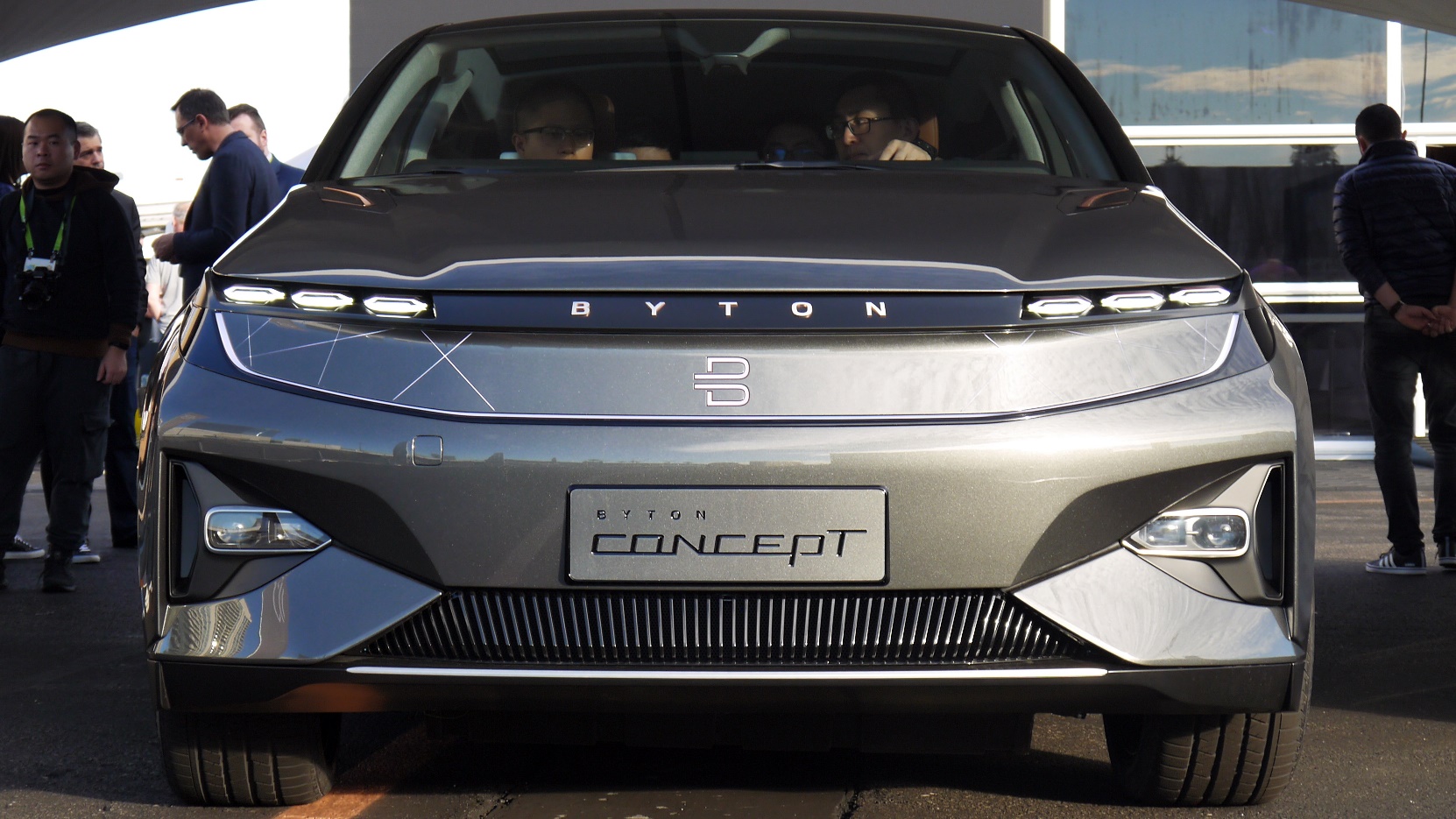
What is Byton?
Byton is a new electric vehicle manufacturer from China, following in the footsteps of US companies such as Tesla and Faraday Future.
Its first car, simply known as the Byton Concept for now, is a crossover SUV which sits low and wide with large 22-inch wheels, giving it a powerful stance even without the usual height of a sports utility vehicle.
Sign up for breaking news, reviews, opinion, top tech deals, and more.
The firm says the car will be available towards the end of 2019 for an "entry-level premium" price tag.
What exactly does that mean? Well there's no exact pricing yet, but I was told it's likely to come in at around $45,000 (£33,000, $AU56,000), which would make it cheaper than the Tesla Model S and Model X.
That's actually not a bad price tag when you consider that the Byton Concept is absolutely packed with technology, from face recognition cameras that unlock the car to gesture controls and slick smartphone integration. It's a glimpse of the future of driving.
Byton Concept design gallery
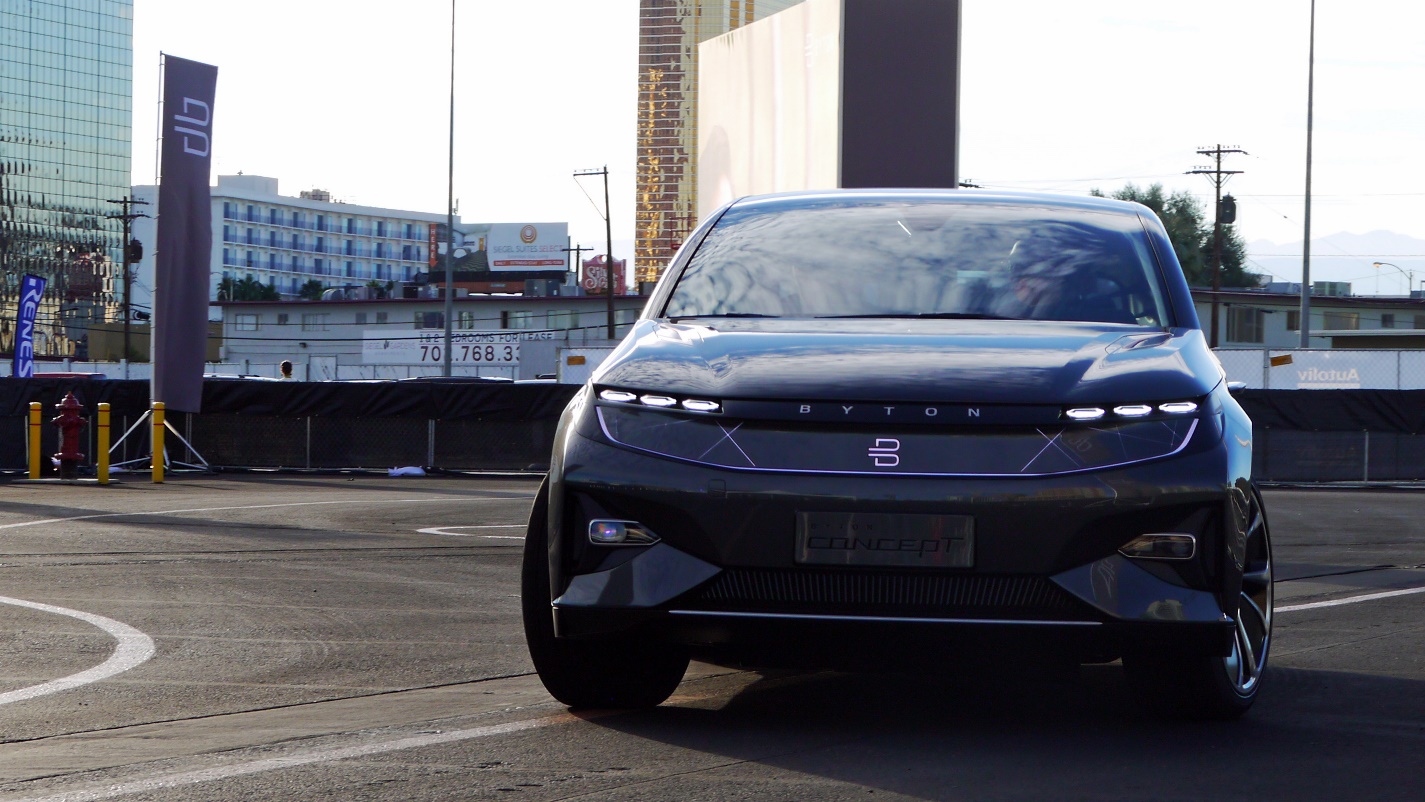
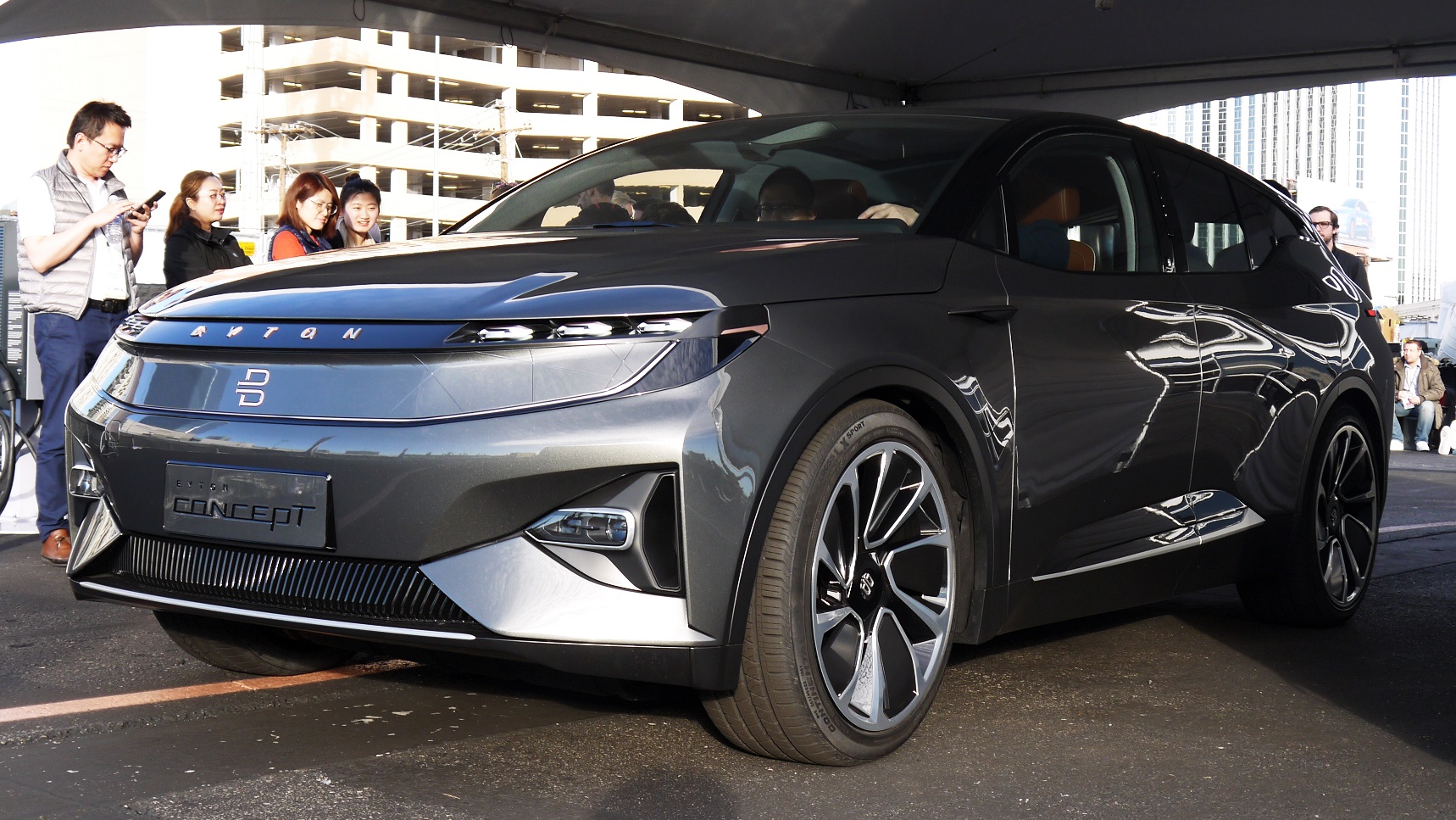

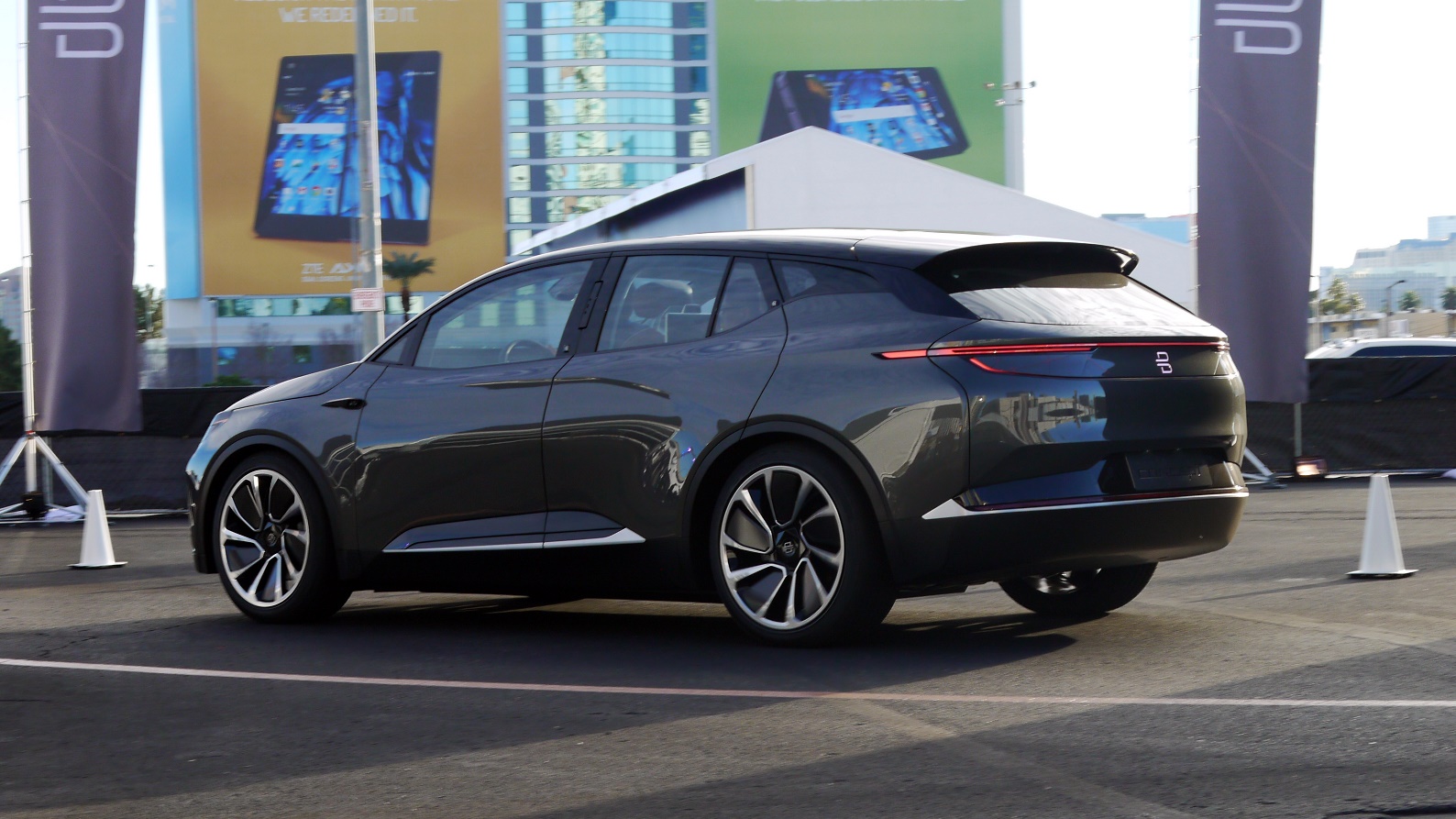
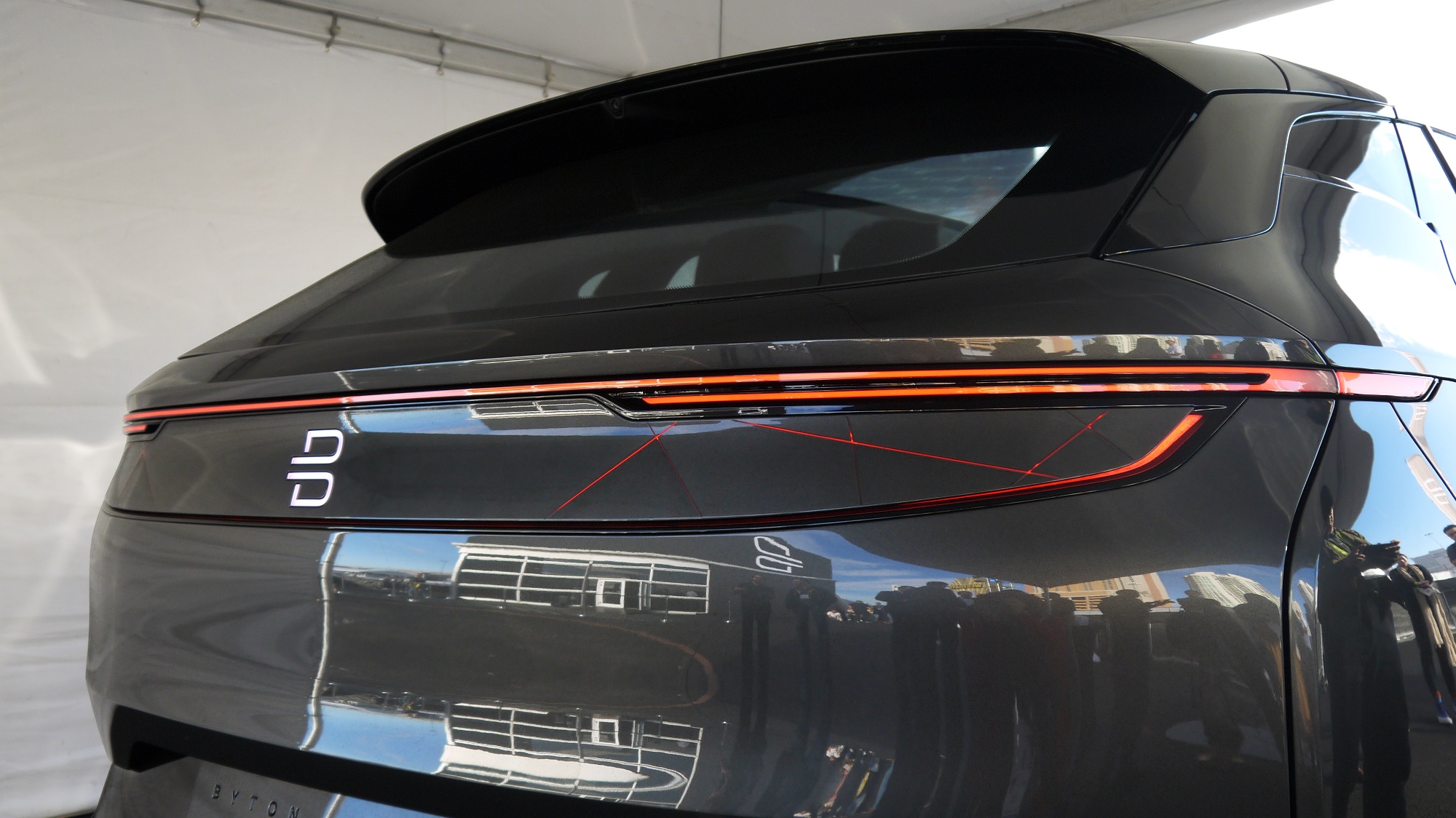


The screen
And now to the main event: the 49-inch (1.25m) display that extends across the entire width of the dashboard is a joy to behold.
Its 4K UHD resolution means it's crystal clear, and its sheer size means it can display a wealth of information and entertainment all at once.
Aside from the huge display, the cabin is relatively sparse, with an uncluttered dash in front of the screen and no physical buttons in sight.
Instead, a gesture control camera unit sits centrally on the edge of the dash, allowing the driver (or front seat passenger) to manipulate the massive screen, hands-free.
Byton big screen gallery

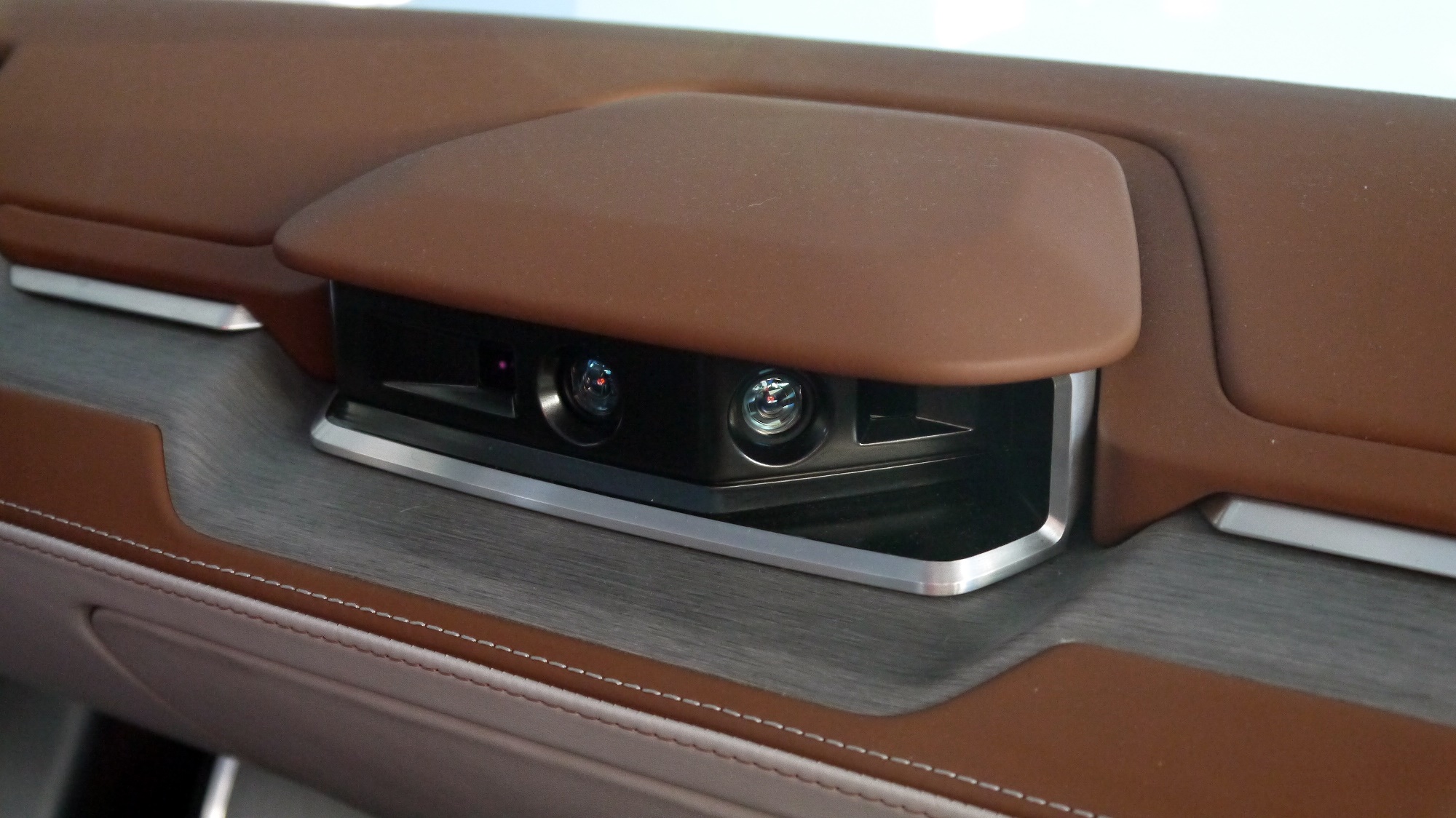


The demo we were given in the car made it look intuitive, with swiping, pinching, grabbing and pointing gestures appearing to work well, although the car wasn't running a full or final build of the Byton Life software platform.
Byton has deliberately not made the 49-inch display a touchscreen, as it doesn't want fingerprints getting it dirty, but it will add touch control via your smartphone before the car launches, for greater accuracy.
There's certainly a lot to look at on the big screen. The driver gets views from the rear view and wing mirror cameras (there are no physical mirrors here) for a wider field of view, along with the usual driving information, while the middle and passenger side of the screen offers up a wealth of options.
You'll be able to watch videos from various streaming services, make and receive phone and video calls, view the 3D satellite navigation and, if you opt to install the Byton application on your smartwatch, you'll also be able to see your vital health data including heart rate, blood pressure and blood oxygen level.
Byton big screen features gallery
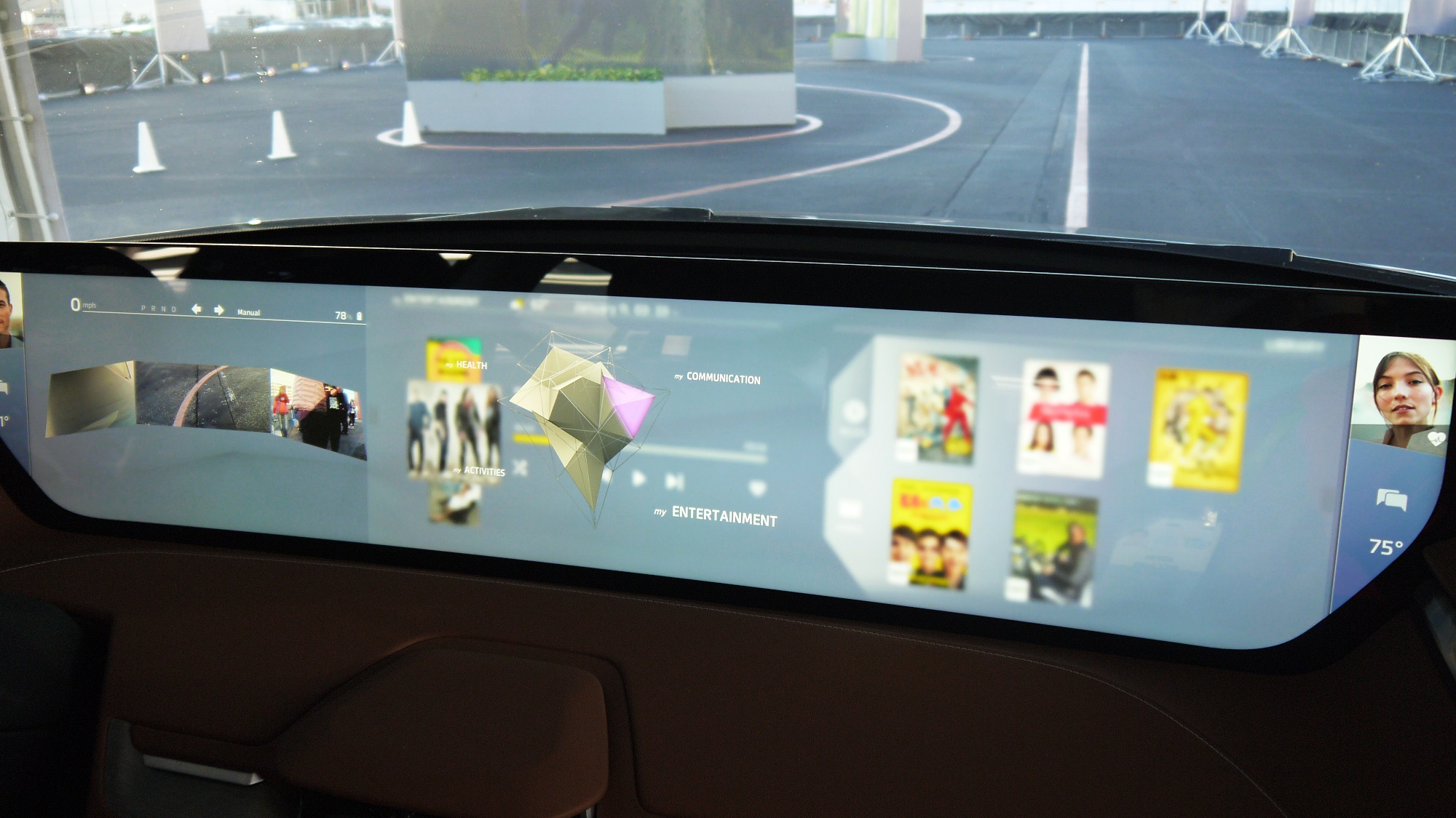
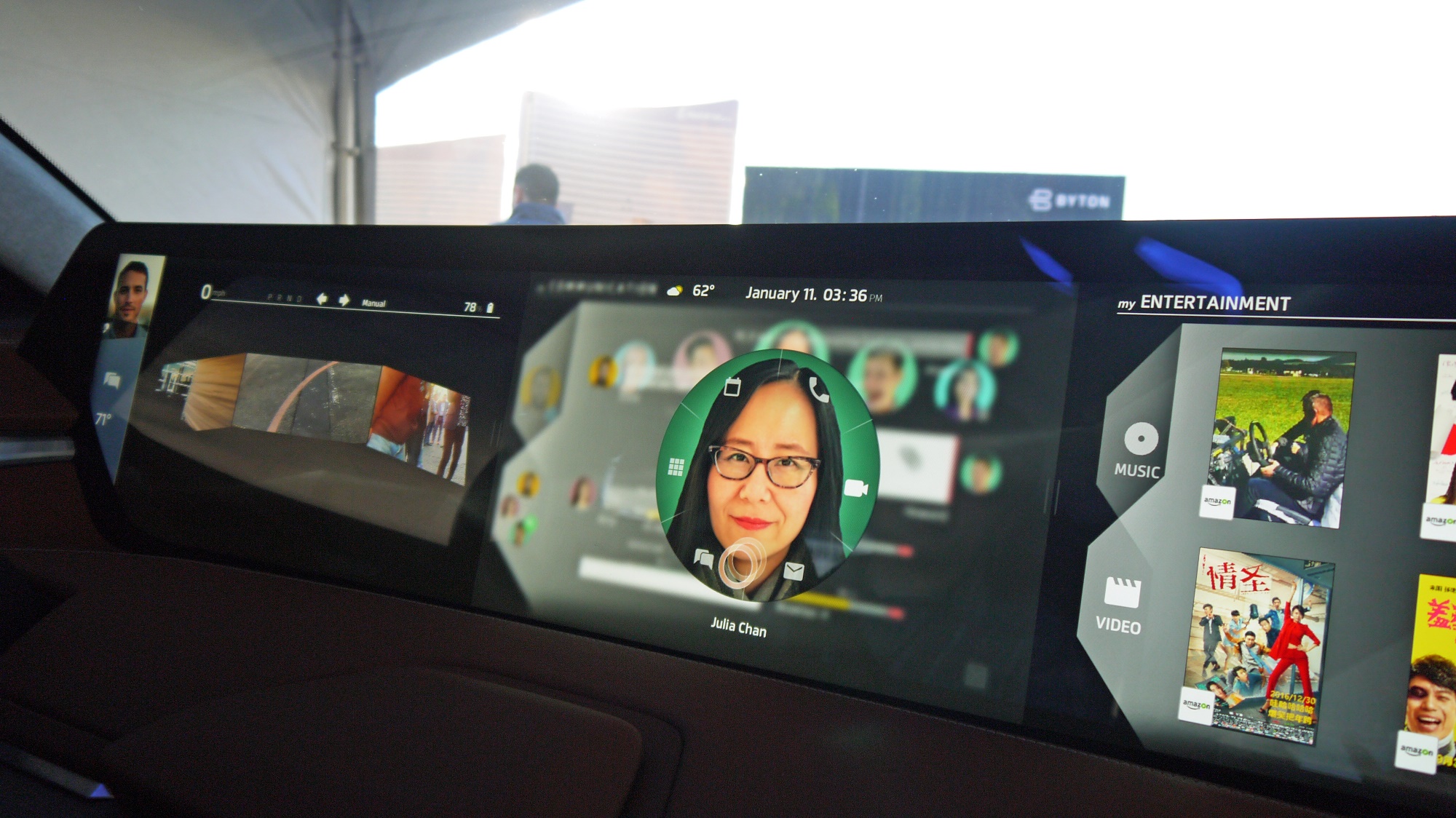

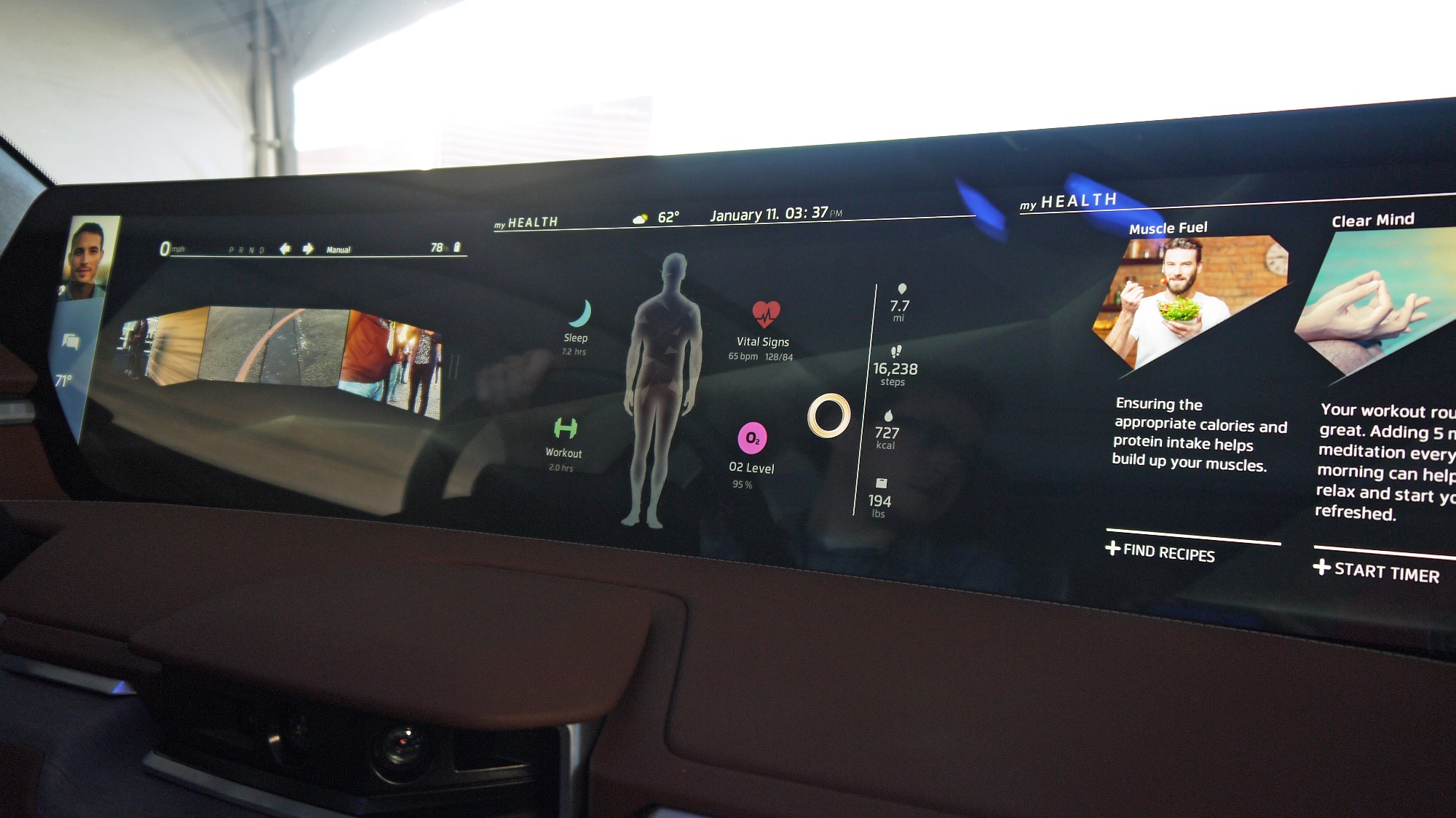
The platform also features a smart AI which can suggest new routes based on updated meeting information from your calendar, offer to send a message to others if you're running late, keep an eye on your health and suggest rest stops, and more.
There's Amazon Alexa integration too, allowing you to utilize all the features of the smart assistant. It also means you'll be able to send commands to the car when at home, such as turning on the heating or AC before you even get to the vehicle.
Totally tech
The technology starts before you get in the car though, with the Byton arriving without a set of keys.
That's because there are facial recognition cameras built into the B pillars (the structural pillars between the front and rear doors).
These cameras scan your face as you approach the car, and will unlock it if you've been set up as a profile for that vehicle. You don't have to be the driver, so any family member or friend will be able to unlock the car if you've previously set up their profile.
They won't necessarily be able to start the engine and drive off though, because there's another 3D face scanner mounted in the steering wheel, this time checking if you are allowed to drive the car.

And face-scanning doesn't stop there, as all passengers will be scanned, enabling the Byton Concept to load each person's individual profile, and adjust seat positions and climate controls for each person automatically.
The car can also sync with your smartphone, which you dock in a wireless charging plinth on the door, providing you with additional in-car controls.
The smartphone integration wasn't available during our demo, and the docking station doesn't appear to be adjustable, which means it's unlikely to provide a snug fit for a lot of the differently sized mobiles available.

The Huawei P10 dummy unit that was residing in the dock did fit snugly though. Byton says it will be offering its own 5.5-inch smartphone when the car launches, and while you can be sure it'll sit nice;y in the dock it's unclear if it'll actually be any good (or how much it'll cost).
These personal profiles and the smartphone integration means that if you get into another Byton car the setup will match the one you settled on in your own vehicle.
Back to the driving seat, and the steering wheel features an 8-inch touchscreen that gives you access to all the core controls, from climate, seat position and interior lighting to navigation, heated windows and car data.
It does look a little odd, and it's likely to be something on an acquired taste for some people, but it certainly offers up a lot functionality.

Back seat drivers aren't forgotten
There's plenty going on in the front of the Byton, but rear seat passengers aren't left out of the fun.
There's a smartphone dock in either rear door, and when the car is stationary the two front seats can angle towards each other by 12 degrees to open up the view of the main display to those in the back.
Yes, movie nights of the future will take place on your drive rather than in your living room. Okay, maybe not, but the option is there.
The Byton Concept will be available in two core models when it launches at the end of the 2019, with the choice of two rear seats or a more traditional bench of three seats.
The former configuration is aimed more at business customers, especially those based in Asia, and includes a 13-inch display on the rear of both front seats, plus a gesture control camera allowing those in the back to dictate what’s happening on the big screen.
With all this technology at your fingertips, it may be difficult to nominate a designated driver – after all, who wants to be stuck driving when everyone else is having fun?
Never fear – Byton has a plan. The car will ship with level 3 autonomy, which still requires a driver to be present, but which means the car can do the majority of the work.
That doesn't solve the problem completely, but Byton claims that a year after the car launches it will roll out level 4 autonomy to the vehicle via a software update.
Level 4 is classed as 'fully autonomous', which means your Byton should be able to drive you where you need to go without any input from you.
Of course, there are various legalities to overcome before you'll be able to go fully autonomous, with very few places allowing self-driving vehicles on their roads at this time.
This is the direction the car industry is heading in though, and if the Byton is anything to go by, long car journeys are about to go from laborious to luxurious.

- John McCann is getting behind the wheel to give you an alternative look at the wealth of cars – and the tech inside them – available today. From super-fast sports cars to tech-packed hatchbacks, he'll take you through a range of makes, models, power and price tags in his regular TR Drives column.

TechRadar's former Global Managing Editor, John has been a technology journalist for more than a decade, and over the years has built up a vast knowledge of the tech industry. He’s interviewed CEOs from some of the world’s biggest tech firms, visited their HQs, and appeared on live TV and radio, including Sky News, BBC News, BBC World News, Al Jazeera, LBC, and BBC Radio 4.